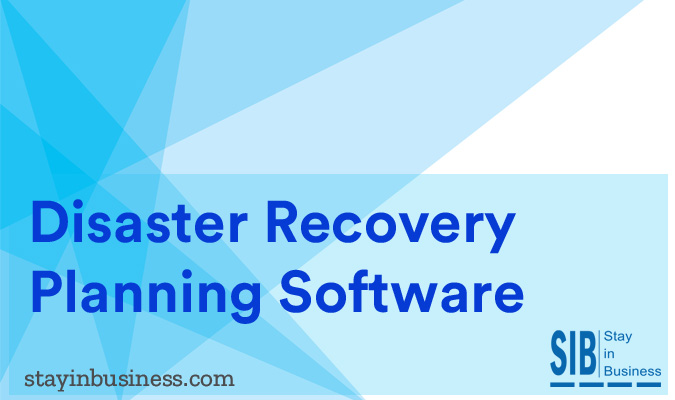 With a disaster recovery planning software, your organization can implement the preventive measures necessary to tackle crisis situations that have the potential to cause irreparable damage and close down operations indefinitely. This is achieved through processes that backup and restore data, systems and applications that are used in different business scenarios. In general terms, disaster recovery planning software is a component of an organization’s disaster recovery capability.
With a disaster recovery planning software, your organization can implement the preventive measures necessary to tackle crisis situations that have the potential to cause irreparable damage and close down operations indefinitely. This is achieved through processes that backup and restore data, systems and applications that are used in different business scenarios. In general terms, disaster recovery planning software is a component of an organization’s disaster recovery capability.
Advantages of Disaster Recovery Planning Software
- Strategic planning
- Information sharing
- Enterprise wide protection
- Structured framework for response
- Documentation in multiple formats
- Dependency mapping
- Centralized control and monitoring
- Real time status updates
- Mobile enabled support
Today, disaster recovery planning software is offered by numerous vendors in the market who have different features and functionalities to showcase as part of their products, services and solutions portfolio. In addition to standard backup and restoration, each software is structured differently and provides the customer a unique user experience. Some are leveraged over cloud based platforms while others are supported by remotely located infrastructure. A disaster recovery planning software essentially keeps track of all changes and backs up those changes in real time, thereby facilitating an ‘always active’ environment.
Instant recovery is also possible with some disaster recovery planning software. In cloud based disaster recovery, all processes are instantly failed over to virtual machines and the company can seamlessly transition any business disruption.
IT teams want all the benefits of a comprehensive disaster recovery planning software without having to spend too much time developing and maintaining plans. The ideal solution, based on the company’s resiliency requirements, eliminates single points of failure by implementing repeatable methodologies. All the operational dependencies of the organization are presented through integrated data sharing capabilities.
However, some level of monitoring is still required to avoid glitches and ensure that the DR solution is error free.
The objectives of these monitoring procedures include ensuring consistency in configurations across production and recovery environments, as well as maintaining production and disaster recovery environments in sync.
IT environments are constantly subject to a flux of changes in the form of configuration tune-ups, patches, alerts, maintenance procedures and so on. The disaster recovery environment doesn’t always reflect all the updates owing to the high volume of changes being effected in the production environment. And these mismatches can impact business when operations are failed over to the alternate site. A disaster recovery planning software can detect and quickly resolve these mismatches well in advance in order to avoid data loss.
Disaster Recovery Planning Software – Scope of Monitoring
All segments of IT infrastructure are covered by the disaster recovery planning software to ensure real time monitoring, including:
- Applications
- Servers
- Databases
- Message layers
- Operating systems and so on
While reviewing software, the disaster recovery planning software covers even elementary configuration parameters, including:
- Registry
- Configuration files
- Database entries
- Reference data and so on
This is further enhanced through potent analytical tools that categorize configuration changes, both by impact and criticality.
A disaster recovery planning software can be used effectively to achieve your organization’s resiliency objectives. IT teams can strategically plan the recovery of mission critical data and operations well within their RTO and RPO objectives. The disaster recovery plan must be developed based on the company’s existing business operations and organizational culture. A good disaster recovery planning software curbs downtime and revenue loss, leading to business continuity.





